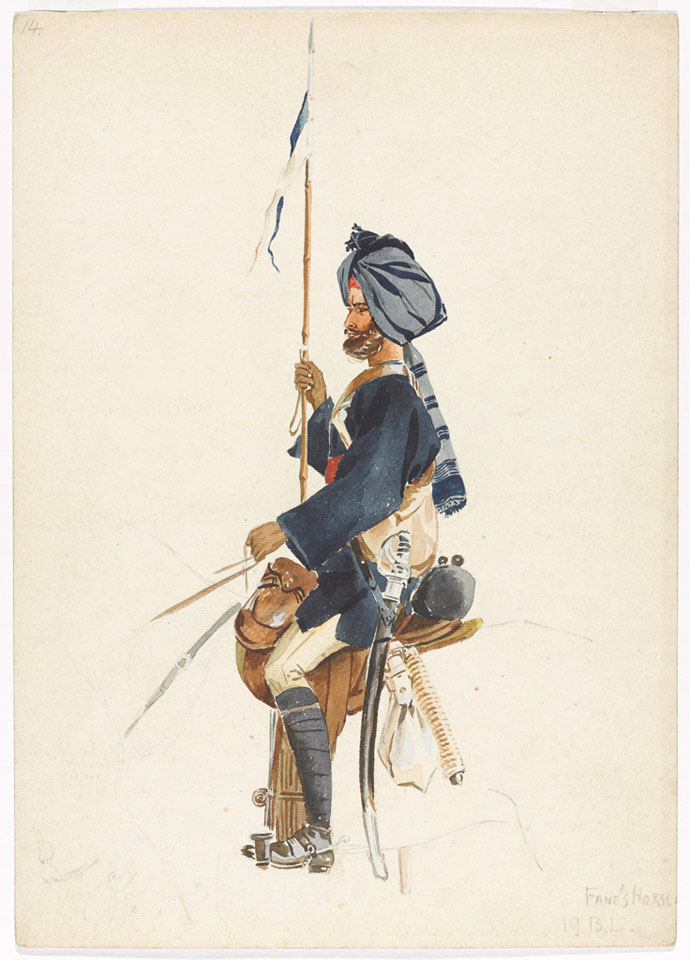THE STORMING OF JHANSI LIEUTENANT BONUS, SUPPORTED BY ONLY ONE MAN, MOUNTED A DOUBLE LADDER OF BAMBOO, AND FOR SOME TIME WAS HACKING, THRUSTING, AND PARRYING BLOWS, UNTIL A REBEL WITH HIS CLUBBED RIFLE HURLED HIM TO THE GROUND. ALTHOUGH HE HAD A REVOLVER IN HIS LEFT HAND HE WAS SO BUSILY ENGAGED THAT HE FORGOT TO USE IT.
1857,-Our object is to make an example to terrify others” John Lawrence
The method was simple and horrible. According to an eye-witness account of executions ordered by John Nicholson, later lionised as the ‘hero’ of Delhi, “the first ten were picked out, their eyes were bandaged and they were bound to the guns – their backs leaning against the muzzles, and their arms fastened to the wheels. The port fires were lighted, and at a signal from the artillery major, the guns were fired. It was a horrid sight. . .a regular shower of human fragments of heads, of arms, of legs appeared in the air through the smoke. . .fragments of Hindoos and fragments of Muslims, all mixed together – were all that remained of those ten.” [Letter by a British officer from Peshawar who witnessed 30 executions on a single day, printed in Blackwood’s Magazine, Edinburgh, November 1857]. The news of these executions and the mode adopted in carrying them into effect, “spread far and wide, and even in the city of Kabul
Our object is to make an example to terrify others” John Lawrence, Chief Commissioner, Punjab wrote to the then commanding officer of the Delhi Field Force, Gen. Sir Herbert Edwardes in June, 1857,
advising that “I would select all those against whom anything bad can be shown – general bad character, turbulence, prominence in disaffection, or in the fight, disrespectful demeanour to their officers – . . . .I would then add to them the oldest soldiers. All these should be shot or blown away from guns. . . .The sepoys will see that we punish to deter, and not for vengeance.
m
Fane's Horse', c 1860.

Walter fane
About
Died: 1885 (age 57 years), Fulbeck, United Kingdom
Parents: Maria Hodges, Edward Fane
Award: Order of the Bath
Partner: Agnes Bold-Hoghton (1879–)
Walter Fane
British general
Alamy
Walter Fane | Literary Gitane - WordPress.com
The Painted Veil is more than a story of forbidden love- it is a beautiful tale of self discovery and redemption.
12 Aug 2020
Walter Fane
is the son of a Dillmouth lawyer. After training as a lawyer and
passing all his exams, he decided to try working as a tea planter in
India.
Walter Fane
entered the service of the East India Company in 1845. He served in the
Irregular Cavalry, 1849-57. He participated in the pursuit and capture
of ...
Walter Fane
: I knew when I married you that you were selfish and spoiled. But I
loved you. I knew you only married me to get as far away from your
mother as ...
Walter Fane
entered the service of the East India Company in 1845. He served in the
Irregular Cavalry, 1849-57. He participated in the pursuit and capture
of ...
Search Results
Subscribe to:
Posts (Atom)













